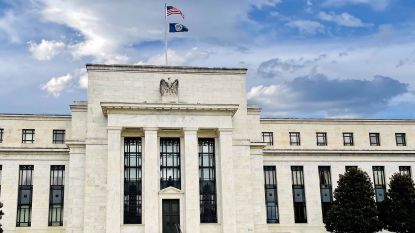Earlier this month, the Federal Reserve raised interest rates by 0.75% to a range of 3.75% to 4%. The Fed expects rates to top out between 4.5% and 4.75% in 2023. Others, such as Goldman Sachs, believe they could go as high as 5.0% next year.
The story of why the Fed is raising rates is known to most investors. They are intended to tamp down inflation and runaway prices for everything from gas to groceries. Average Americans are feeling the pinch, too. However, in the long run, the Fed and many economists argue that the pain will be much more severe if the central bank doesn’t take steps to kill inflation.
The Fed’s target for inflation is 2%. In October, the inflation rate was 7.7%, down from June’s peak of 9.1%, but well above the central bank’s goal.
Subscribe to Kiplinger’s Personal Finance Be a smarter, better informed investor.
Save up to 74%
Sign up for Kiplinger’s Free E-Newsletters Profit and prosper with the best of Kiplinger’s expert advice on investing, taxes, retirement, personal finance and more – straight to your e-mail.
Profit and prosper with the best of Kiplinger’s expert advice – straight to your e-mail.
So interest rates continue to climb, albeit at a slower pace than recent months.
At this point, what happens to stocks if the Fed is wrong about inflation?
True Inflation Might Be Far LowerEconomist Paul Krugman believes the true inflation rate is possibly below 4%, half the September rate, due to cooling housing rental rates and slowing wage growth.
“A quick and dirty calculation: core CPI inflation was 6 percent annualized over the past 3 months; about half of this was shelter, which rose at 8 percent. But if market shelter inflation is 3 or less, as Goldman thinks, ‘true’ core is ~4 percent,” Krugman tweeted (opens in new tab) on Nov. 5.
He goes on to say that slowing wage growth might lead to “substantial disinflation,” but the standard measures used to calculate the headline inflation rate have yet to be captured.
Ultimately, Krugman argues that core inflation, which excludes volatile food and energy prices, could be as low as 3%, not the 6.3% rate seen in the October CPI report.
That’s Good for Stocks, Right?If Krugman is correct, the data will take a while to show up in the monthly inflation numbers. Maybe even years. In the meantime, investors worry that the ongoing fight against inflation will continue to put downward pressure on stock prices, which generally don’t like periods of higher interest rates.
However, given what happened to inflation in the 1970s and 1980s, the Fed has no appetite for letting it off the hook and pivoting to lower interest rates.
As The Globe and Mail reported (opens in new tab) in October, inflation in Canada went from near zero in 1970 to above 12% in 1975. It then fell to 4.9% in November 1976, only to bubble up to 13.3% in April 1981, before falling to below 3% in October 1984.
While these are Canadian inflation numbers, the data is from the Federal Reserve Bank of St. Louis. The inflation rates in the U.S. over these 14 years were very similar.
The only way the Fed will stop raising rates is when it is 100% confident that inflation is dead and buried. In the meantime, stocks will likely continue to find new lows.
On Nov. 7, UBS economists said they see the S&P 500 falling another 16% over the next nine months, at which point the Fed takes its foot off the pedal of interest rate hikes.
“For the U.S., we now expect near zero growth in both 2023 and 2024, and a recession to start in 2023,” wrote UBS chief economist Arend Kapteyn in a note to clients.
According to UBS, if you buy between April and June 2023, you could achieve double-digit returns by the end of 2023. But of course, market timing only sometimes works. It’s time in the market that wins the day more often than not.
UBS sees the federal funds rate cut to 1.25% by early 2024. If so, investors will come charging back into the market.
In the meantime, investors better hope Paul Krugman’s wrong about the true inflation rate because if he’s not, there will be a lot more carnage in the markets from future rate hikes that turned out to be unnecessary.
